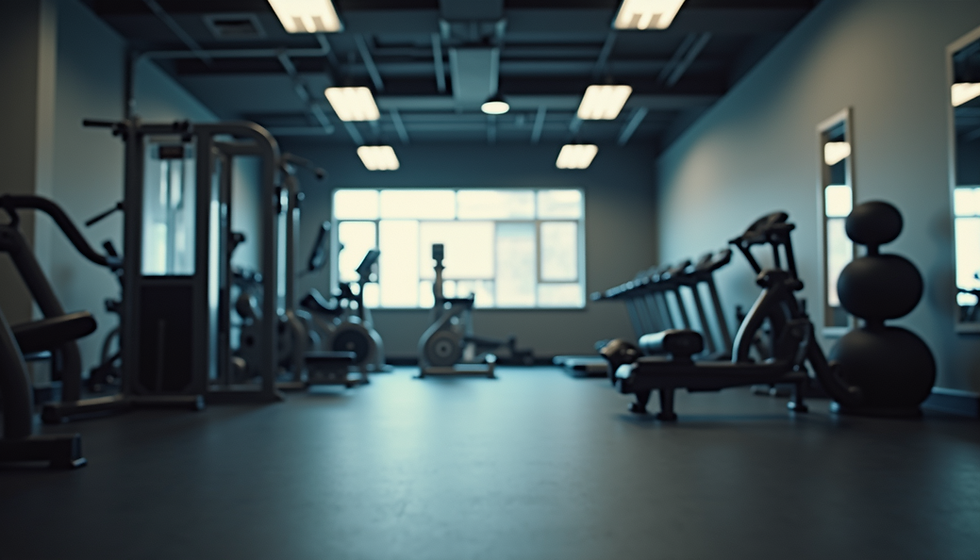Why Physical Activity is Essential for Healthy Aging
- Coach Cem

- Oct 8
- 4 min read
As we grow older, maintaining our health becomes increasingly important. One of the most effective ways to support healthy aging is through regular physical activity. Exercise not only helps keep the body strong but also improves mental well-being and reduces the risk of many chronic diseases. This article explores why physical activity is essential for healthy aging and offers practical tips to stay active at any age.
The Role of Physical Activity in Healthy Aging
Physical activity plays a crucial role in promoting healthy aging by enhancing physical, mental, and emotional health. As we age, muscle mass and bone density naturally decline, but regular exercise can slow or even reverse these changes. It helps maintain mobility, balance, and flexibility, which are vital for independence and reducing the risk of falls.
Exercise also supports cardiovascular health by improving circulation and lowering blood pressure. It helps regulate blood sugar levels, reducing the risk of type 2 diabetes. Additionally, physical activity boosts the immune system, making it easier to fight off infections.
Mentally, staying active can improve cognitive function and reduce the risk of dementia and depression. Activities like walking, swimming, or yoga stimulate the brain and promote the release of endorphins, which enhance mood and reduce stress.

How to Incorporate Physical Activity for Healthy Aging
Incorporating physical activity into daily life can be simple and enjoyable. The key is to find activities that suit your interests and physical abilities. Here are some practical ways to stay active:
Walking: A low-impact exercise that can be done anywhere. Aim for 30 minutes a day, five days a week.
Strength training: Use light weights or resistance bands to build muscle strength twice a week.
Balance exercises: Practice standing on one foot or tai chi to improve stability.
Flexibility exercises: Stretch regularly to maintain joint mobility.
Group classes: Join senior fitness classes or community activities to stay motivated and socialize.
Remember to start slowly and gradually increase the intensity and duration of your workouts. Always consult with a healthcare provider before beginning a new exercise program, especially if you have existing health conditions.

For those interested in more structured programs, senior physical activity services offer tailored exercise plans designed to meet the unique needs of older adults. These programs often include professional guidance to ensure safety and effectiveness.
What is the 3 3 3 Rule for Working Out?
The 3 3 3 rule is a simple guideline to help structure workouts, especially for beginners or those returning to exercise after a break. It involves:
3 sets of exercises
3 repetitions per set
3 times per week
This rule encourages consistency without overwhelming the body. For example, a workout might include 3 sets of 3 squats, 3 sets of 3 push-ups, and 3 sets of 3 lunges, performed three times a week. This approach helps build strength and endurance gradually while minimizing the risk of injury.
As fitness improves, the number of repetitions or sets can be increased, or the exercises can be made more challenging. The 3 3 3 rule is a great starting point for anyone looking to establish a regular exercise routine.
Benefits of Physical Activity Beyond the Body
Physical activity offers benefits that extend beyond physical health. Engaging in regular exercise can improve sleep quality, which is often disrupted as we age. Better sleep supports overall health and cognitive function.
Exercise also fosters social connections. Group activities or classes provide opportunities to meet new people and build friendships, which are important for emotional well-being. Social engagement has been linked to lower rates of depression and cognitive decline.
Moreover, physical activity can boost self-confidence and independence. Being able to perform daily tasks without assistance enhances quality of life and promotes a positive outlook on aging.

Tips for Staying Motivated and Safe
Staying motivated to exercise regularly can be challenging, but these tips can help:
Set realistic goals: Start with small, achievable targets and gradually increase them.
Track progress: Use a journal or app to record workouts and celebrate milestones.
Find a workout buddy: Exercising with a friend can make activities more enjoyable and hold you accountable.
Mix it up: Try different types of exercises to prevent boredom and work various muscle groups.
Listen to your body: Rest when needed and avoid pushing through pain.
Safety is paramount, especially for older adults. Always warm up before exercising and cool down afterward. Wear appropriate footwear and clothing. Stay hydrated and avoid exercising in extreme weather conditions.
If you experience dizziness, chest pain, or severe shortness of breath during exercise, stop immediately and seek medical attention.
Embracing an Active Lifestyle for Lifelong Health
Physical activity is a cornerstone of healthy aging. It supports the body, mind, and spirit, helping older adults live fuller, more independent lives. By incorporating regular exercise into daily routines, anyone can enjoy the many benefits of staying active.
Whether it’s a gentle walk in the park, strength training at home, or joining a community fitness class, the key is to keep moving. Remember, it’s never too late to start, and every step counts toward better health.
Explore options for senior physical activity to find programs tailored to your needs and preferences. Embrace an active lifestyle today and invest in your health for tomorrow.




Comments